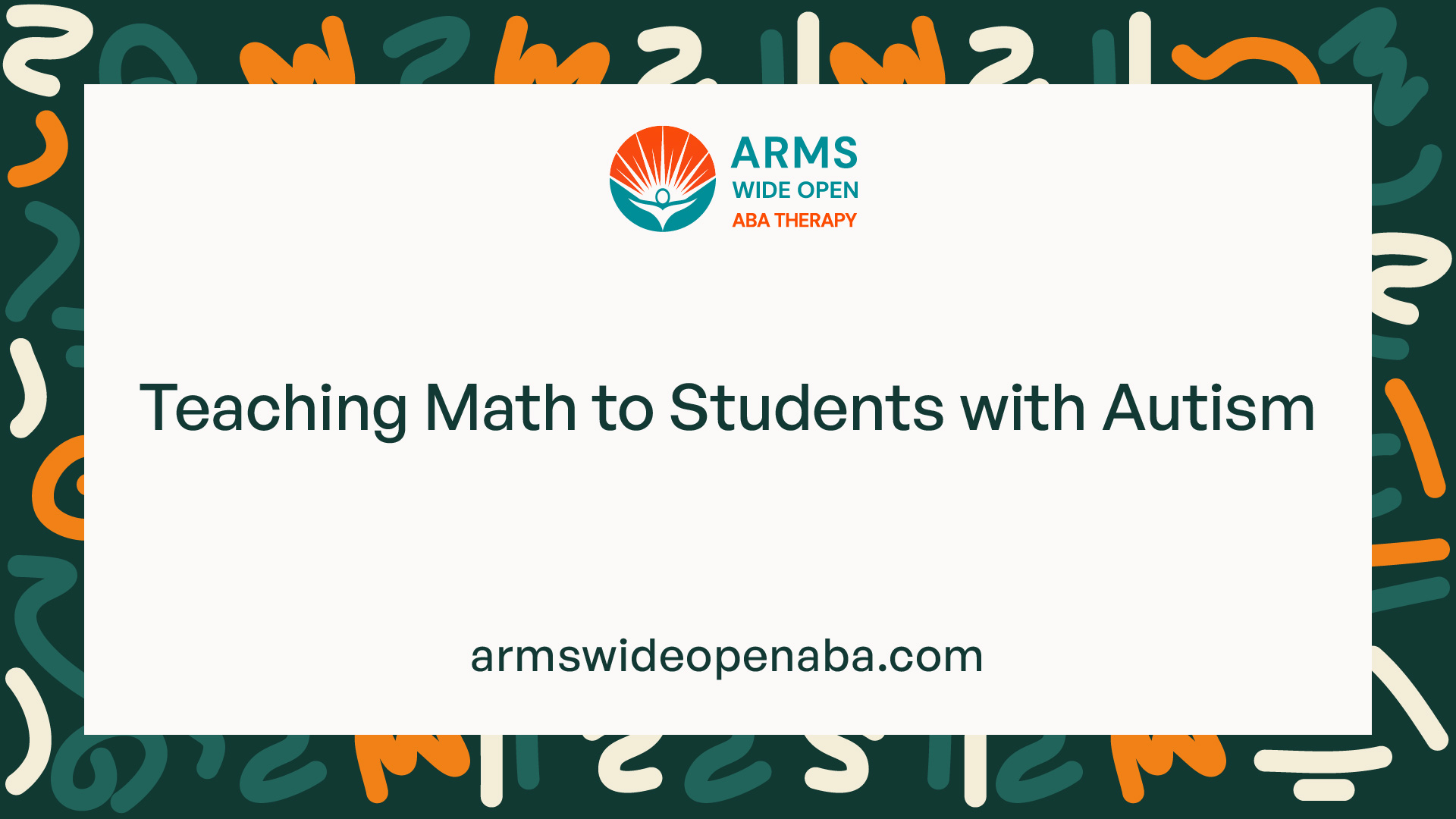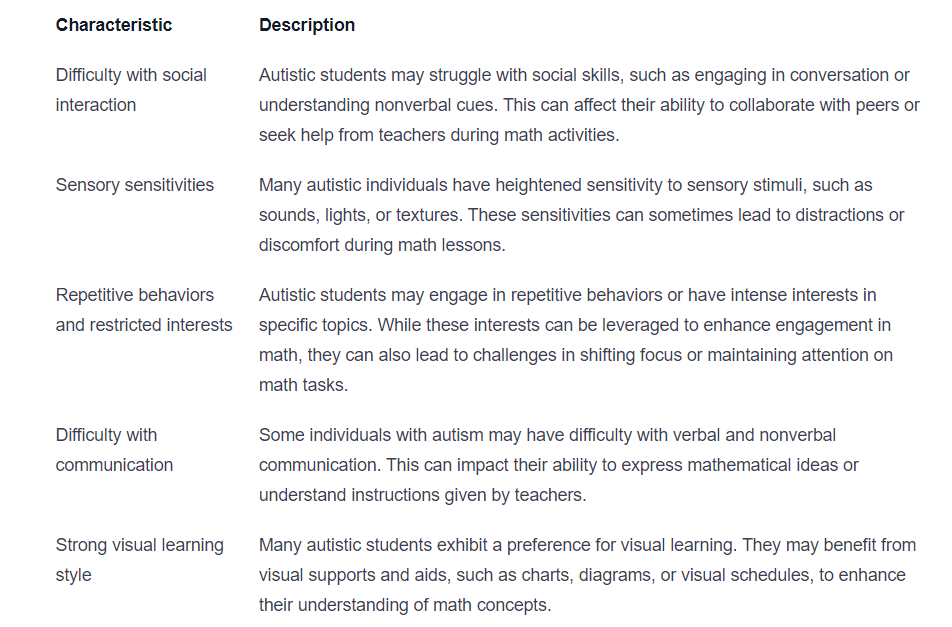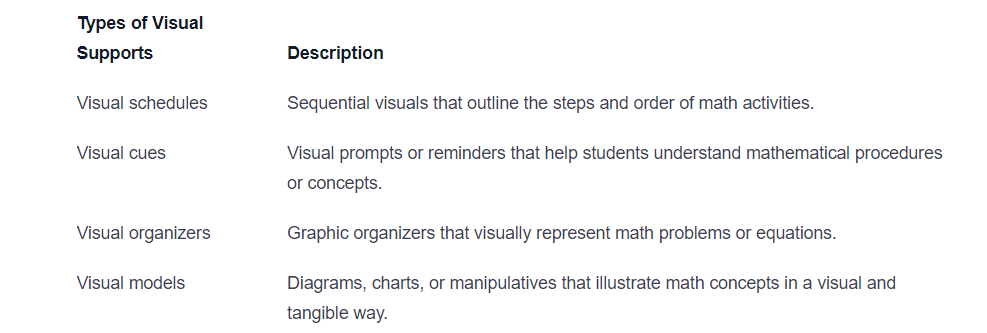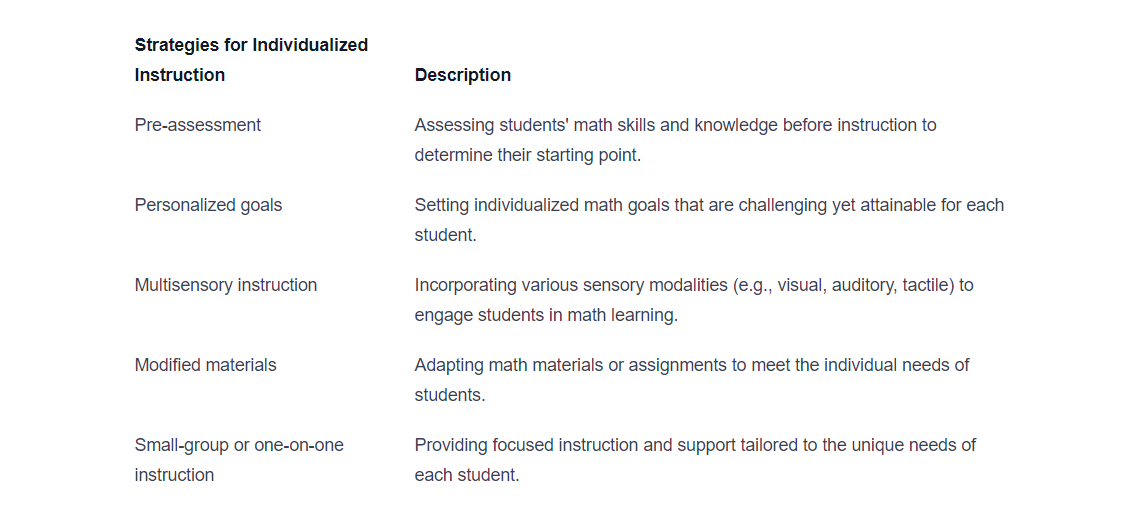Teaching Math to Students with Autism
Unlock math success for autistic students! Discover effective strategies and instructional approaches to teach math with confidence.

Understanding Autism and Math Learning
When it comes to teaching math to students with autism, it is essential to have a solid understanding of autism spectrum disorder (ASD) and the specific challenges that autistic students may face in math learning. This understanding can help educators tailor their instructional approaches and provide effective support to these students.

Characteristics of Autism Spectrum Disorder
Autism spectrum disorder is a neurodevelopmental condition that affects individuals in various ways. While each person with autism is unique, there are some common characteristics that can impact their math learning experiences. These include:

Challenges Faced by Autistic Students in Math Learning
Autistic students may encounter specific challenges when it comes to learning math. These challenges can vary depending on individual strengths and weaknesses, but some common difficulties include:

By recognizing these characteristics and challenges, educators can implement effective instructional approaches and strategies to support autistic students in their math learning journey.
Effective Instructional Approaches for Autistic Students
When it comes to teaching math to students with autism, it's important to employ effective instructional approaches that cater to their unique learning needs. Here are three approaches that have shown promising results in supporting the math learning of autistic students.
Visual Supports and Aids
Visual supports and aids play a crucial role in facilitating the understanding and comprehension of math concepts for autistic students. These visual tools provide a clear and concrete representation of abstract mathematical ideas, making them more accessible and understandable.

By incorporating visual supports and aids, teachers can enhance the learning experience for autistic students, promoting better understanding and retention of math concepts.
Structured Teaching Methods
Structured teaching methods provide a predictable and organized learning environment, which is beneficial for autistic students. These methods emphasize clear routines, explicit instructions, and consistent expectations, creating a structured framework for math instruction.

Structured teaching methods help autistic students feel more secure and confident in their math learning, as they know what to expect and how to navigate through the learning process.
Individualized Instruction and Differentiation
Recognizing and responding to the diverse needs of autistic students is crucial in promoting their math learning. Individualized instruction and differentiation strategies ensure that each student's specific strengths, challenges, and learning styles are considered when designing math lessons.

By tailoring instruction to the specific needs of autistic students, teachers can create a supportive and inclusive math learning environment that fosters their engagement, motivation, and overall success.
By implementing these effective instructional approaches, educators can empower autistic students to develop a strong foundation in math and unlock their full potential in this critical subject.
Strategies for Teaching Math to Students with Autism
Teaching math to students with autism requires thoughtful and individualized approaches that address their unique learning needs. By implementing effective strategies, educators can create a supportive and engaging learning environment for these students. Here are three key strategies for teaching math to students with autism:
Establishing Routines and Predictability
Establishing routines and providing predictability is crucial for students with autism. Consistent routines help create a structured learning environment, which can enhance their understanding and retention of math concepts. By following a predictable schedule, students with autism can anticipate what to expect during math lessons, reducing anxiety and promoting focus.
Strategies
Create a visual schedule that outlines the sequence of math activities and transitions.
Use a consistent format for math lessons, such as starting with a warm-up activity, followed by direct instruction, practice exercises, and a wrap-up.
Clearly communicate any changes or variations in the routine ahead of time to prepare students for transitions.
Using Concrete and Hands-On Materials
For students with autism, hands-on and concrete materials are highly effective in facilitating math learning. These materials provide tangible representations of abstract concepts, making math more accessible and engaging. Manipulating objects and visualizing mathematical ideas using concrete materials can help students grasp concepts more easily.
Strategies
Utilize manipulatives, such as counting blocks, number lines, or geometric shapes, to demonstrate mathematical operations and concepts.
Incorporate real-world objects and examples into math lessons to make connections between math and everyday life.
Encourage students to physically interact with materials to solve problems, such as using objects to group or sort items when learning multiplication or division.
Breaking Down Concepts into Smaller Steps
Breaking down math concepts into smaller, manageable steps is essential for students with autism. By presenting information in a structured and sequential manner, educators can support their understanding and help them build a solid foundation in math. This approach allows students to focus on one concept at a time, reducing cognitive overload and promoting comprehension.
Strategies
Divide complex math problems into smaller, more manageable tasks or sub-skills.
Use visual aids, such as step-by-step diagrams or flowcharts, to visually represent the sequential process of solving math problems.
Provide explicit and clear instructions for each step, using concise language and visual prompts to support comprehension.
Implementing these strategies can greatly enhance the math learning experience for students with autism. By establishing routines, utilizing hands-on materials, and breaking down concepts into smaller steps, educators can create a supportive and inclusive learning environment that promotes their mathematical growth and success.
Promoting Engagement and Motivation
Engaging and motivating autistic students in math learning is essential for their success. By incorporating specific strategies, educators can create an inclusive and stimulating learning environment. Here are three effective approaches to promote engagement and motivation in teaching math to students with autism.
Incorporating Special Interests and Reinforcement
One way to engage autistic students in math is by incorporating their special interests into the learning process. By integrating topics or examples related to their interests, educators can make the math content more relatable and engaging. For example, if a student is passionate about animals, math problems involving animal-related scenarios can capture their attention and motivate them to participate actively.
Reinforcement techniques also play a crucial role in promoting engagement. Offering rewards or incentives for completing math tasks or achieving specific goals can boost motivation and create a positive learning experience. The rewards can be tailored to the individual student's preferences, such as extra free time or small prizes.
Making Math Relevant and Meaningful
To enhance engagement, it is important to make math relevant and meaningful for autistic students. Connecting math concepts to real-life situations or practical applications can help students understand the significance of math in their daily lives. By demonstrating how math skills are relevant to activities like budgeting, cooking, or measuring, educators can foster a sense of purpose and increase motivation.
Additionally, providing opportunities for problem-solving and critical thinking can make math more meaningful. Presenting authentic and challenging math problems that require students to analyze, strategize, and find solutions can stimulate their interest and engagement. Teachers can create a supportive environment where students feel comfortable taking risks and learning from their mistakes.
Encouraging Collaboration and Peer Support
Collaboration and peer support can greatly enhance engagement and motivation for autistic students in math. Group activities and cooperative learning experiences provide opportunities for students to work together, share ideas, and learn from their peers. This fosters a sense of belonging and encourages active participation.
Teachers can facilitate peer support by implementing strategies such as peer tutoring or cooperative learning structures. Pairing students with different strengths and abilities can create a supportive learning environment where students can learn from each other and build their mathematical skills together.
Strategies for Collaboration and Peer Support
Peer tutoring
Cooperative learning
Group problem-solving activities
By incorporating special interests, making math relevant and meaningful, and encouraging collaboration and peer support, educators can create a math learning environment that engages and motivates autistic students. These strategies support individualized learning and help students develop a positive attitude towards math, leading to improved learning outcomes.
Supporting Communication and Social Skills
When teaching math to students with autism, it's important to provide support for their communication and social skills. By implementing strategies that promote clear communication and encourage social interactions, educators can create an inclusive and effective learning environment. Here are some approaches that can be utilized:
Providing Clear and Concise Instructions
Clear and concise instructions are essential for students with autism to understand math concepts and tasks. Using simple language and avoiding ambiguous or figurative expressions can help minimize confusion. It is also beneficial to break down instructions into smaller, manageable steps, allowing students to process the information more effectively.
Utilizing Visual Schedules and Supports
Visual schedules and supports are powerful tools for students with autism as they provide visual cues and structure. These aids can be used to outline the sequence of math activities, helping students understand what is expected of them. Visual supports can include visual schedules, charts, diagrams, and graphic organizers, which enhance comprehension and foster independence in completing math tasks.
Encouraging Verbal and Nonverbal Communication
Encouraging both verbal and nonverbal communication is crucial for students with autism to express their thoughts and understanding of math concepts. Educators should create a supportive and inclusive environment that values all forms of communication. This can involve providing opportunities for students to share their ideas, ask questions, and engage in discussions. Visual supports, such as visual prompts or gestures, can also facilitate communication and comprehension during math lessons.
Implementing these strategies can enhance the learning experience for students with autism, promoting effective communication and social interactions in the context of math education. By providing clear instructions, utilizing visual supports, and encouraging communication, educators can empower their students to excel in math while fostering their overall development.
Sources
https://www.time4learning.com/homeschooling/special-needs/autism/teaching-math.html
https://www.crossrivertherapy.com/autism/teaching-math
https://www.iidc.indiana.edu/doc/resources/math-curriculum.pdf
Similar articles
We’re here to help you

Our team is here to assist you in this process. Contact us for any assistance.
it’s easy to apply
We Accept Most Insurances
Our in-network insurance partnerships make ABA therapy more accessible to families throughout our service areas.







Our Insurance Process
We'll request your insurance details to help us verify your plan's coverage for ABA therapy. Once we've received this information, we'll walk you through your benefits, including copayments, deductibles and out-of-pocket maximums, so you know what to expect in advance.
Our team will then handle the preauthorization and all the necessary paperwork.
.svg)





















.jpeg)


































.jpeg)




.jpeg)







.jpeg)











.jpeg)
















